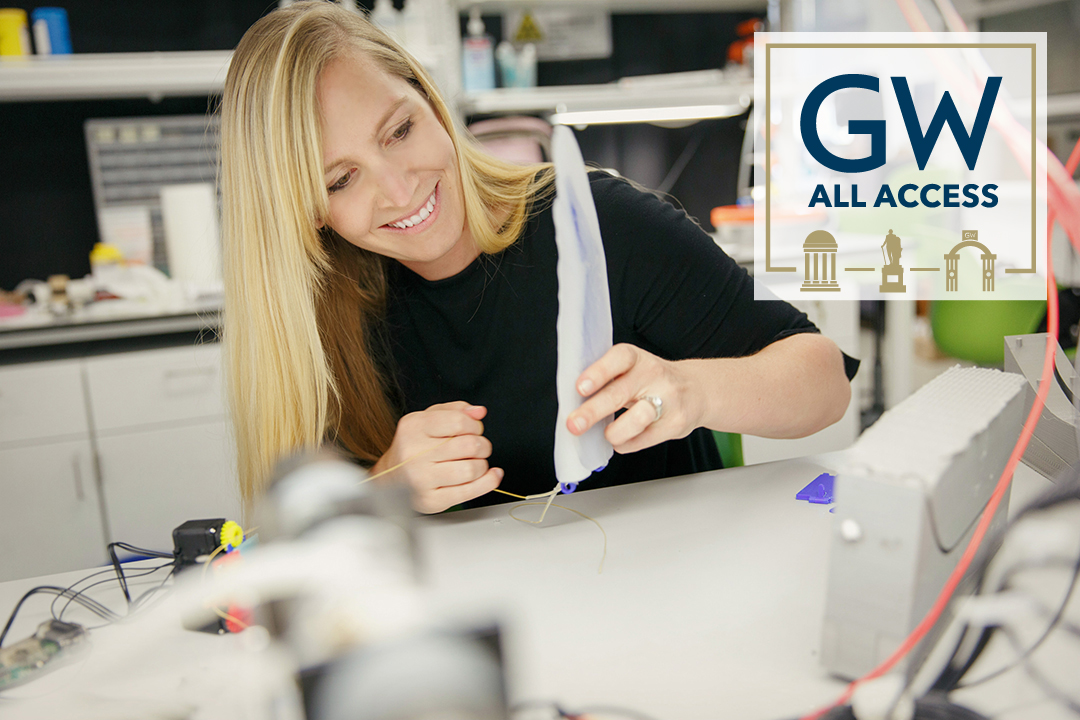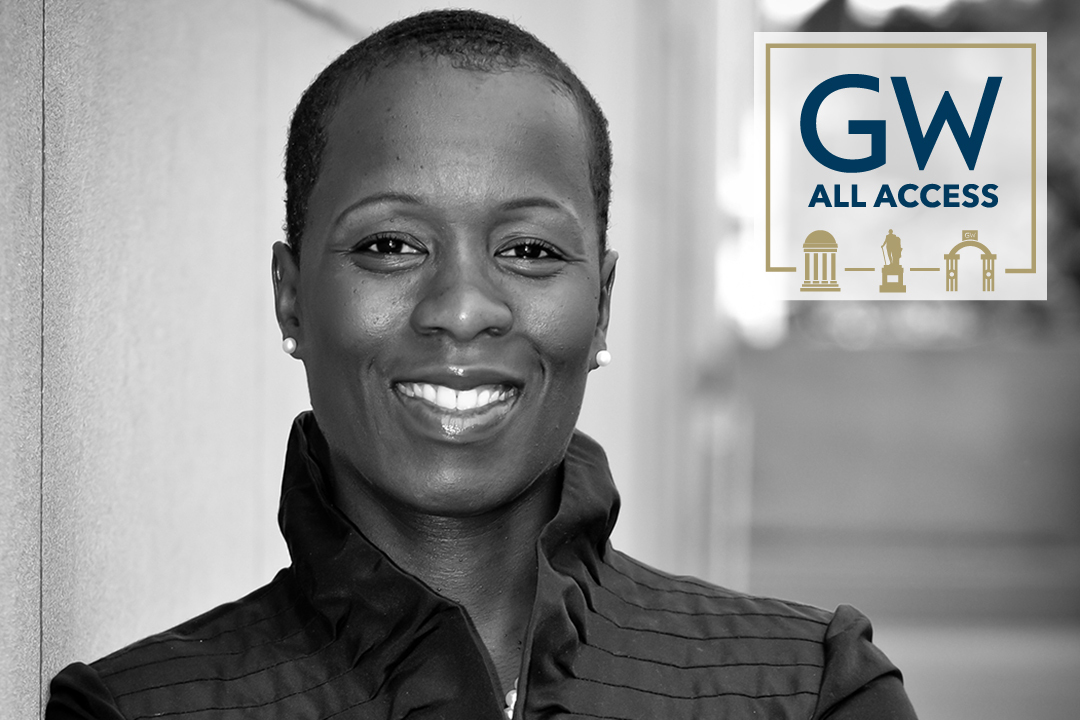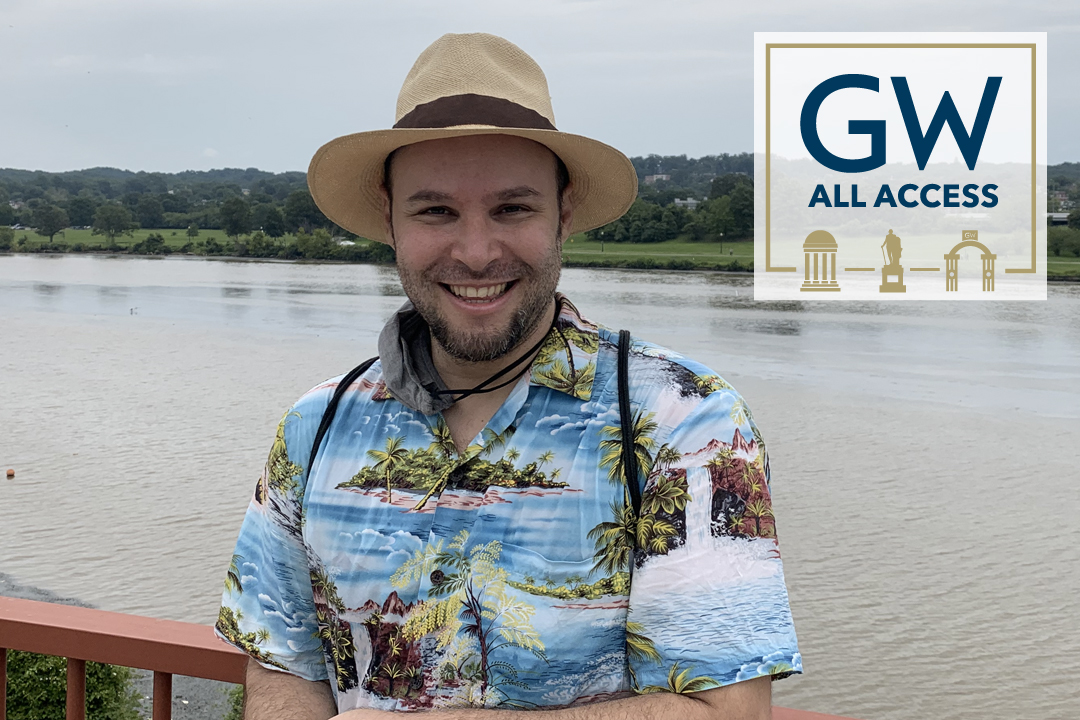By Kristen Mitchell
George Washington University associate professor Megan Leftwich often reminds her students that fluid mechanics isn’t supposed to be easy. Studying the behavior of liquids and gases combines physics, engineering and a lot of math—making mastery of the subject fundamental for the mechanical and aerospace engineers of tomorrow.
“I tell my students, if you go into the world and you say, ‘my fluid mechanics course was easy,’ you probably had a bad fluid mechanics course,” she said. “It’s just a hard subject, and there’s kind of no way around that.”
This fall presents a new challenge—transitioning the rigorous School of Engineering and Applied Science Fluid Mechanics I to a virtual format. Dr. Leftwich, a fluid dynamicist by training, spent the summer recording lectures, adapting lab components and reworking assignments to meet that challenge.
“I really strongly believe in our fundamental engineering courses,” she said. “I enjoy teaching some of these bigger, harder, ‘let’s really get our feet wet’ type of courses.”
About 70 students, primarily juniors, are enrolled in her class for fall. The course is a requirement for mechanical and aerospace engineering and civil and environmental engineering majors, however upperclassmen students majoring in biomedical engineering often take the course as a technical elective. Students will meet virtually three times a week for synchronous lectures and lab sessions.
Dr. Leftwich will split class time in the live lecture sessions, meeting with half of her students at one time using Blackboard Collaborate Ultra. During this time they will work through problem sets, do demonstrations and discuss questions. Students will view lectures outside of class as part of a flipped classroom model.
While some labs will be transitioned to live demonstrations by teaching assistants or moved to courses students are likely to take next year, others will be adapted for at-home data collection. For example, during an in-person lab held in previous semesters, students used class time to construct tin foil boats and fill them with pennies until they sink to study buoyancy. Using data collected during the experiment, the class plots the volume of the boat versus the mass of the pennies.
This fall students will complete the same lab from home. Each student will be asked to construct a boat and carry out the experiment, then record their findings in a Google spreadsheet. If a student can’t find pennies but has dimes or quarters, they will convert the mass as needed.
Students also will work in small groups to tackle ethical questions of engineering. The students will be assigned ethical scenarios in the workplace, research relevant case studies on how they should respond and present their answers to the class. This is an assignment that translates to the virtual environment with relative ease, Dr. Leftwich said.
“Even though students are all over the place, there’s so many ways for them to connect virtually,” she said.
More than ever faculty are working to be available to students, Dr. Leftwich said. She has been talking with colleagues about best practices they learned from the spring virtual learning period and plans to use a Slack channel to hold virtual office hours.
She encourages students to be proactive and reach out to instructors and teaching assistants before they fall behind. Putting in the time needed to comprehend challenging material can make all the difference, she said.
“Now more than ever I think students need to take responsibility for their own learning,” she said. “Often, students very much feel like they need to be taught, and the reality is, you learn much better when you teach yourself.”





